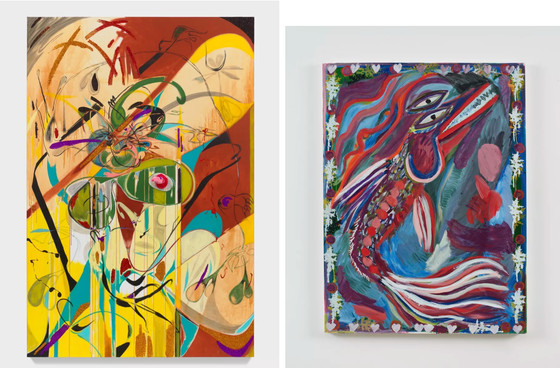Why is it popular for `` ugly paintings '' that are grotesque or strange?

Many people can understand the splendor of 'beautiful paintings' such as elaborate portraits, magnificent landscapes, and mysterious religious paintings. On the other hand, however, paintings that emphasize 'ugliness' in which the form is destroyed or deviate from the aesthetic sense are often evaluated as highly as beautiful paintings. Artsy , an online art media, explains what aspects of such 'ugly paintings' are popular.
Why “Ugly” Paintings Are So Popular | Artsy

According to Artsy writer Ayanna Dodger, the concept of beauty was a central tenet of Western art history, from classical art to the modern era, but since the 20th century, many artists have sought to create more destructive, challenging, and distorted styles. The new style of painting is characterized by often unpleasant or unnatural coloration, distorted figures, and unsettling subject matter, which Dozier describes as ``a painting that emphasizes ugliness over beauty, with an emphasis on aesthetic provocation.''
As for what an ``ugly painting'' looks like, Mr. Dodger cites an exhibition titled `` UGLY PAINTING '' held by Nahmad Contemporary , a New York-based gallery, from June to August 2023. The 'UGLY PAINTING' exhibition includes paintings with grotesque brushstrokes and shapes that create an eerie atmosphere, such as 'Dos and Donts Nurses (United)' by Rita Ackerman, in which shadowy people create irregular body masses in brown, red, yellow, and black swirls, and 'Pork' by Conner Murray, in which a young woman and a dead pig lie side by side on the surface of the water.

A press release for the exhibition explains, ''UGLY PAINTING' refers to

Also, Rachel Wetzler, senior editor at
In 1978, the NEW Museum , a museum that specializes in contemporary art in New York, held an exhibition called `` Bad Painting '' based on the concept of `` bad paintings '' in which the use of colors is flat or a style that assumes children's graffiti. Dean Kisik, co-planning manager of `` UGLY PAINTING '' said, ``The concept of bad painting is no longer meaningful.Most contemporary paintings somehow violate conventions and conventional tastes, so most contemporary paintings will fit the exhibition of 'Bad Painting'.'
Like Wetzler, Kissick says that we need to make a clear distinction between ``bad paintings'' and ``ugly paintings,'' because ``the idea of ugliness in painting still remains. It reveals how you can honestly talk about it, ”explaining the appeal of ``ugly pictures''.
Also, according to Mr. Kisik, the reaction to the exhibition of 'UGLY PAINTING' was generally favorable, and no one complained of discomfort. Some of the exhibits are not only those drawn with the intention of `` ugly paintings '', but there are also works that have been distorted as a result of bold and challenging composition and color usage, so `` even in pictures that look ugly at first glance.

Mr. Kisik says, 'Especially now, ugly paintings are preferred now.' If an artist's work reflects the experience of creating the work, then the aesthetics of the work can be considered to be consistent with the reality we are facing right now. 'Simply put, we live in ugly times. Ugly paintings give us a way to face this ugliness and find beauty in it,' said Kisik.
Related Posts:
in Art, Posted by log1e_dh







